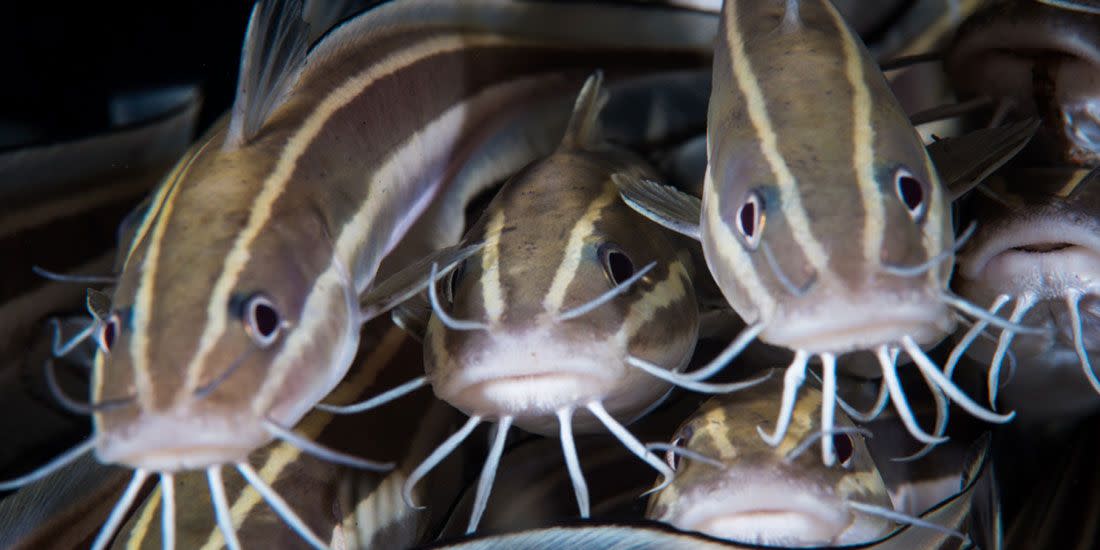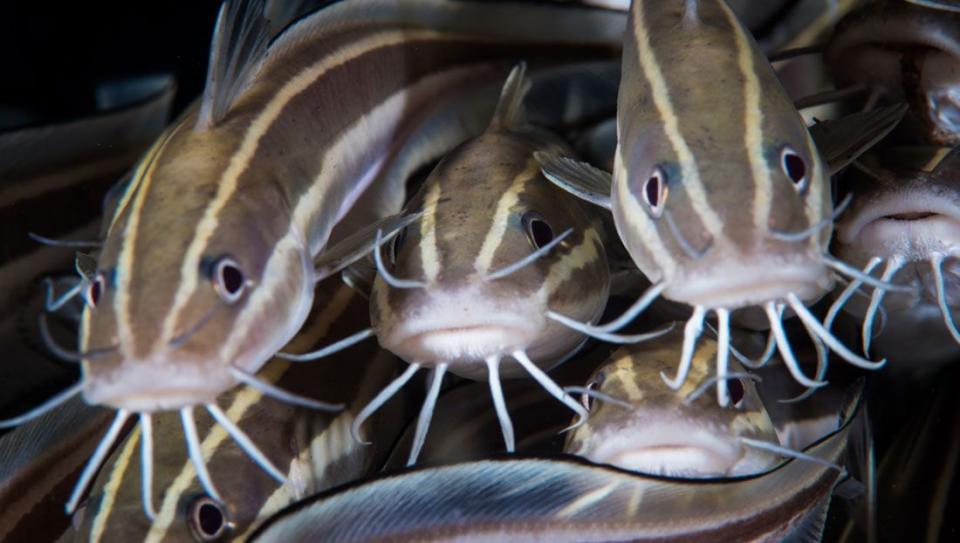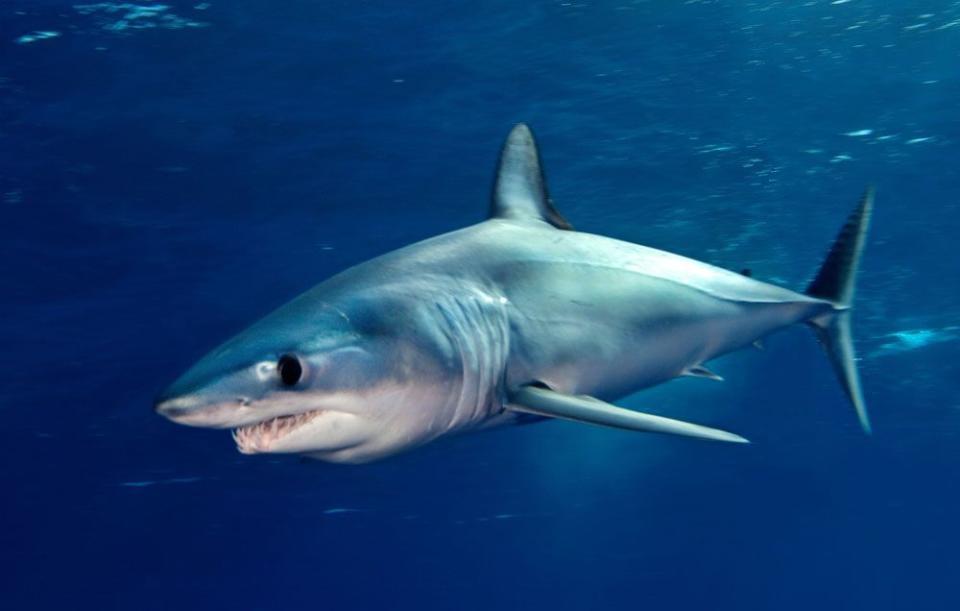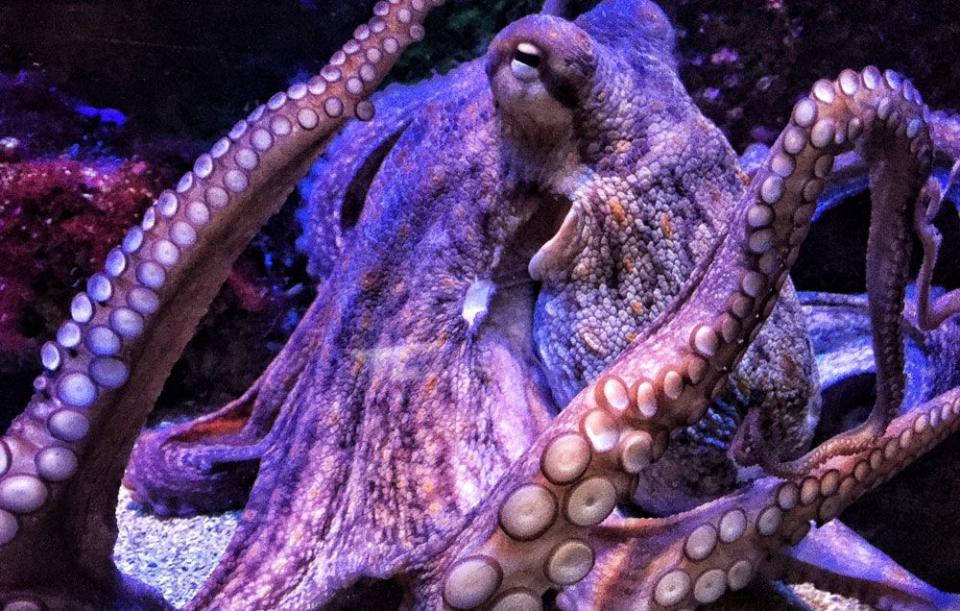Fish You Should Stop Eating Before They Disappear

It was not long ago that Americans rarely thought about where their food came from, let alone the impacts of their choices. These days it’s increasingly important to know not only what you’re eating and where it’s come from. From food co-ops, farmers markets, and community supported agriculture (CSA), to whole aisles (and grocery stores) devoted to natural, organic, local and sustainable produce—Americans and legal protections have quickly evolved to begin averting the worst problems of industrial agriculture. So though the journey to a healthy sustainable terrestrial food system is far from over, it is well underway.
Seafood, however, is more slippery. “That’s because it’s the ‘Last of the Buffalo Hunters,” when it comes to seafood says Joe Lasprogata, Vice President of Samuels and Son Seafood Co. “The oceans are in some ways the last source of truly wild products, and we need to be careful with those.” Samuels and Son sponsors Sustained Seas, an organization dedicated to promoting sustainable fisheries via labeling and education. Part of the reason fisheries are in trouble is that consumers didn’t know the impacts of their choices.
Lasprogata says, “For way too long there’s been this surprising attitude: Fishermen believed that fisheries belonged to them, and that has led to collapse, over and over again. There was no care, no stewardship. But fisheries can absolutely be sustainable.” That confusion has continued to spill over into consumer behavior, since some people still make fish-buying decisions based on taste, price, and texture—rather than perceived sustainability, according to a recent study on British Columbian consumer habits.
But it’s extremely important to think about where the fish comes from, because those factors affect not only your health, but also the future of wild fish stocks, which we and countless other species depended on for our survival. “There are lots of ways to identify a so-called “Dirty Dozen” of fish, and it’s crucial to be aware of overfishing, pollution, and bycatch,” says Marianne Cufone.
Cufone is the Executive Director of Recirculating Farms Coalition, an organization dedicated to creating local land-based produce and fish systems using hydro- and aquaponics, small local systems that avoid the problems of open-water fish farms and industrial agriculture altogether, where the fish waste fertilizes fresh produce. The former Director of the Fish Program of Food and Water Watch, Cufone’s mission is redirecting consumers toward healthy, sustainable fish-eating. She laughs, saying, “I get a lot of texts from my friends asking me which fish are okay to eat.”
Cufone stresses that consumers can begin with a list of the 12 Worst Fish, or a “Fishy Dozen”—compiled with help from experts.
Here are the 12 fish you should never eat—and what to eat instead.
Imported Catfish

Why it's bad: “These guys have to stay on the list,” says Cufone. “If there’s nothing else to pay attention to, know this: Imported fish are almost never inspected for filth.” Nearly 90 percent of the catfish imported to the U.S. comes from Vietnam, where use of antibiotics that are banned in the U.S. is widespread. (Antibiotic use is also a problem with imported shrimp). Furthermore, the two varieties of Vietnamese catfish sold in the U.S., Swai and Basa, aren't technically considered catfish by the federal government and therefore aren't held to the same inspection rules that other imported catfish are.
Eat this instead: Stick with domestic, farm-raised catfish. It's responsibly farmed and plentiful, making it one of the best fish you can eat. Or, try Asian carp, an invasive species with a similar taste to catfish that's out-competing wild catfish and endangering the Great Lakes ecosystem.
Shark

Why it's bad: Problems associated with our eating too many sharks happen at all stages of the food chain, says Cufone. For one, these predatory fish are extremely high in mercury, which poses threats to humans. But ocean ecosystems suffer, too. "With fewer sharks around, the species they eat, like cownose rays and jellyfish, have increased in numbers," Cufone says. "And the rays are eating—and depleting—scallops and other fish." There are fewer of those fish in the oceans for us to eat, placing an economic strain on coastal communities that depend on those fisheries. Shark have long lives, they mature late, and they only have one pup at a time. Sometimes they are cut up and sold as sea scallops, says Cufone. Plus, “If you see sea scallops that are a uniform size and shape, you may be looking at shark.” Shark-finning is illegal in the U.S., but its practice in other areas is causing devastation in shark-populations worldwide
Eat this instead: Among the recommendations for shark alternatives are Pacific halibut and Atlantic mackerel. (And when shopping for scallops, avoid cookie-cutter perfect ones.)
Atlantic Cod
Why it's bad: “Cod on the list breaks my heart,” she says. “Because it’s a New England staple and we all love to support our fisherman. But cod had the worst season in 2016 in years, with serious catch depletion.” Atlantic cod stocks collapsed in the mid-1990s and are in such disarray that the species is now listed as one step above endangered on the International Union for Conservation of Nature's Red List of Threatened Species.
Eat this instead: The good news, if you love fish 'n' chips (which is nearly always made with cod), is that Pacific cod stocks are still strong and are one of Food and Water Watch's best fish picks.
Tuna
Why it's bad: According to Cufone, tuna is bad news all around. “We are eating it to death,” she says. Atlantic and Pacific Bluefin, Albacore, Yellowfin…they are all to be avoided. Canned tuna is one of the most consumed fish in the U.S., and that’s depleting the fisheries. (Here are four canned fishes you should avoid at all costs.)
Eat this instead: For your tuna salad, substitute tinned sardines (they’re Seafood Watch recommended, and are one of the healthiest fishes you can eat) or even organic tinned chicken, such as Wild Planet Organic Roasted Chicken Breast.
Wild Caviar
Why it's bad: Caviar from beluga and wild-caught sturgeon are susceptible to overfishing, but the species are also being threatened by an increase in dam building that pollutes the water in which they live. All forms of caviar come from fish that take a long time to mature, which means that it takes a while for populations to rebound—any wild caviar is to be avoided, says Cufone.
Eat this instead: If you really love caviar, opt for fish eggs from American Lake Sturgeon or American Hackleback/Shovelnose Sturgeon caviar from the Mississippi River system; check out California Caviar which sources only sustainably harvested fish eggs.
Red Snapper
Why it's bad: This popular fish from the Gulf of Mexico is just starting to recover from overfishing. “I worry about it a lot,” says Cufone. “Even though it’s not recovered, the federal government agreed to reopen recreational red snapper fishing recently. These fish have long been on the trouble list.”
Eat this instead: Mild-tasting wild-caught Asian or Atlantic Sea Bass is a good, Seafood-Watch recommended alternative to red snapper, or look for the farm-raised version, marketed as barramundi.
Chilean sea bass
Why it's bad: Chilean Sea Bass, the commercial name for Patagonian Toothfish, was nearly fished to commercial extinction, are still considered a fish to avoid. Fish stocks are in such bad shape that the nonprofit Greenpeace estimates that, unless people stop eating this fish, the entire species could be commercially extinct within five years. Food and Water Watch's guide notes that these fish are high in mercury, as well.
Eat this instead: These fish are very popular and considered a delicacy, but you can get the same texture and feel with U.S. hook-and-line–caught haddock.
Orange roughy
Why it's bad: Orange Roughy has been so overfished that many restaurant chains still refuse to serve it. Further, it tends to be high in mercury levels. It is a long lived fish, that takes ten to twenty years to reach maturity—which means populations take a long time to recover, and fish tend to accumulate toxins like mercury of lengthy time periods. Even if you see orange roughy for sale, or labeled as “sustainably harvested” avoid it. The Marine Stewardship Council does not certify it, and its fisheries are not considered it well managed.
Eat this instead: Opt for yellow snapper or domestic catfish to get the same texture as orange roughy in your recipes.
American Eel
Why it's bad: Eel remains problematic too. Most consumers see it in sushi, but it is often high in PCBs and mercury, and eel populations are too often overharvested. It is also sold as yellow or silver eel.
Eat this instead: If you like the taste of eel, opt for Atlantic- or Pacific-caught squid instead.
Imported King Crab
Why it's bad: The thing about imported King Crab is that it comes mainly from Russia where there are no protections and the fishery is being overharvested. If you know for sure that your crab is actually from Alaska, says Cufone “you’re okay.” That’s because these crabs are actually two different critters. True Alaskan King Crab from Alaska, is a protected US fishery that’s well managed, and stocks are healthy. But the “imported Alaskan King Crab” is not actually Alaskan, it’s the unprotected crab from Russia.
Eat this instead: When you shop for king crab, whatever the label says, ask whether it comes from Alaska or if it's imported. Approximately 70 percent of the king crab sold in the U.S. is imported, so it's important to make that distinction and go domestic.
Atlantic Salmon
Why it's bad: Open water, farmed Atlantic salmon fisheries contribute to pollution and interspecies mixing. “If you can find terrestrially farmed Atlantic salmon, that’s typically better farming management,” says Cufone. Farmed salmon is also where you’re most likely to encounter genetically engineered salmon.
Eat this instead: Wild caught Pacific salmon generally have less of the problems than Atlantic. And wild caught salmon from Alaska is even better, since those populations are the most robust. When it comes to flavor, wild salmon is where it’s at. As one of the healthiest fish you can eat, it's higher in omega-3 fatty acids (which can help fight seasonal allergies, among many other things) and also packs less saturated fat than farmed. It’s also a sustainable seafood: the Alaskan salmon fishery—America’s main source of wild salmon—is managed to ensure the plentiful return of wild fish in the future. Varieties to look out for are King, Sockeye, Pink, Keta and Coho salmon.
Octopus

Why it's bad: Basically, they’re extremely smart. “This is an ethics case that I’d put in the same category as eating dolphins and whales,” says Cufone. “It’s become increasingly hard to talk about eating octopus because we’ve learned so much about their intelligence and abilities.”
Eat this instead: If you like the taste of octopus, opt for squid instead.
How to Keep Up With the Best Fish to Eat
The list will change because we’ve entered an era where fisheries information is fluid. What might be the worst thing to eat now because of severe depletion could rebound and be a sustainable fishery a few years down the road with proper management. To know if your choices are healthy—for themselves and the fishery itself—it’s useful to know where to go to get that information when you’re standing in front of the fish counter.
The four best sources of accurate, sensible, science-based information on which fish to eat are:
Blue Ocean’s “Fish Phone” App Carl Safina is the founder of the Blue Ocean Institute and Safina Center, and author of many important books on the oceans and animals. His organization wanted to make it easy for consumers to decide which fish to eat. All you need to do is text the word FISH followed by the species you want to know about, to 30644 (so, for instance, fish shrimp, or fish bluefin). In less than 10 seconds you’ll have valuable info in the palm of your hand about the fish in question.
Monterey Bay Aquarium’s Seafood Watch A respected and increasingly well-known resource for consumers, businesses and chefs around the country, to help them make healthy choices for the oceans.
The Marine Stewardship Council “An international non-profit organization established to address the problem of unsustainable fishing and safeguard seafood supplies for the future. The MSC uses a blue label and fishery certification program to contribute to the health of the world’s oceans.”
NOAA Fisheries Stock Status Updates For those who want useful, regularly updated science info and detailed specs on various fisheries tracked by the US government, this is your go to.
This story originally appeared onRodale’s Organic Life in July 2017.
You Might Also Like

